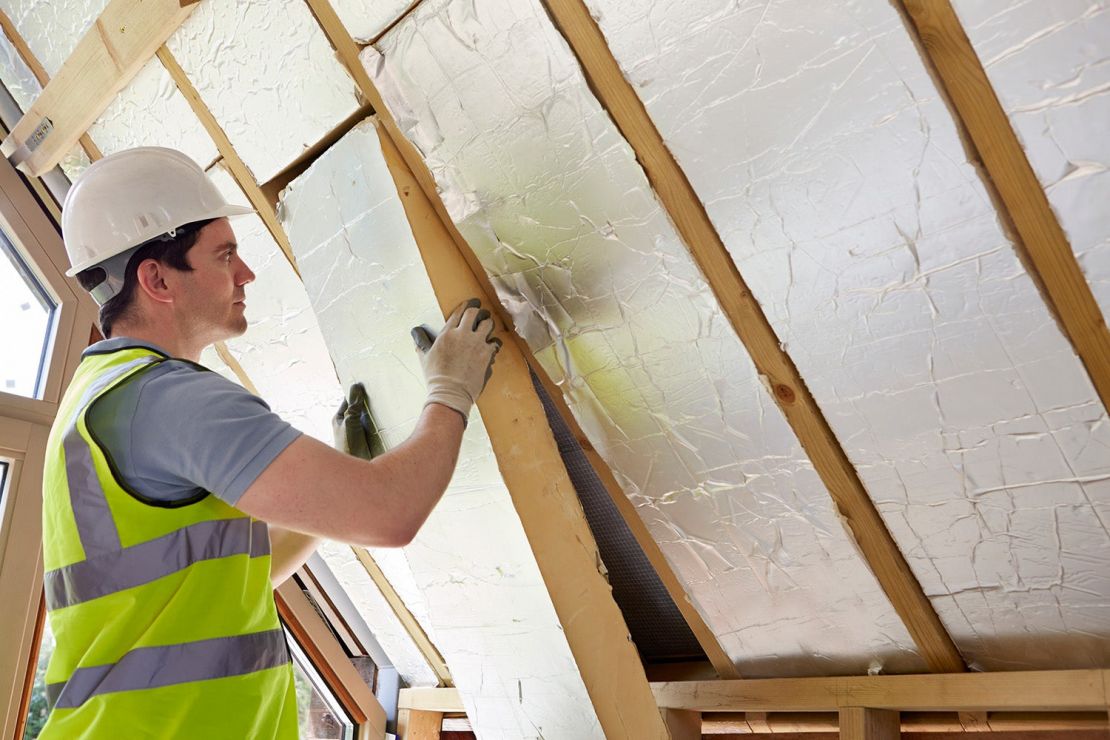Last year, Congress passed the landmark Inflation Reduction Act of 2022 (IRA), which includes the largest investment in tackling climate change in U.S. history. The law earmarks billions of dollars for state energy offices to address the crisis, including through rebate programs for home energy upgrades.

Stanford PhD student and Knight Hennessy Scholar Jill Ferguson’s idea to simplify the process for applying to California’s energy incentive programs could help millions of residents. (Image credit: Courtesy Jill Ferguson)
But Stanford PhD student and Knight-Hennessy Scholar Jill Grey Ferguson said that across the nation, such benefits aren’t going to the people who need them the most.
“The qualification criteria and application processes make it difficult to acquire rebates, particularly for low-income residents and disadvantaged communities,” she said. “If we’re going to decarbonize all homes, we have to make it easier and prioritize those who need rebates most.”
Ferguson’s idea to create a one-stop application portal for California’s energy incentive programs has captured the attention of state lawmakers and was introduced in the legislature as Senate Bill 755. If passed, it could improve access to such programs for millions of residents, lower energy costs statewide, and help California and the nation move closer to meeting urgent climate goals.
“This idea could become the national standard for distributing rebates, incentives, rate assistance, and other programs that help make decarbonization more accessible,” Ferguson said.
Capital stacking
Across the country, states have incentive programs to encourage residents to electrify and improve their home’s energy efficiency. Upgrades like installing better insulation or replacing a gas appliance with an electric one can dramatically lower energy usage and costs while improving home health and comfort.
“The Inflation Reduction Act has about $9 billion in rebates coming out all over the nation for these kinds of home upgrades,” Ferguson said.
IRA allocates $582 million in federal rebates for home decarbonization in California. Those funds will join a sea of existing state incentive programs, which Ferguson said are quite robust compared to those in other states due to California’s decades-long policy commitment to energy efficiency.

Upgrades like insulation can improve a home’s energy efficiency and lower energy costs. (Image credit: Getty Images)
But taking advantage of these programs isn’t always easy, Ferguson said. Each has its own qualification criteria and application process. Many also require applicants to report earnings, which may be uncomfortable for low-income residents and even discourage them from applying. She noted that although many programs are means-tested, research by Tony Reames, professor of environment and sustainability at the University of Michigan, has shown that rebates disproportionately go to higher-income households, even though they have less need for them.
Ferguson proposes creating a website or portal where California residents can easily apply for all the energy rebates available to them. “Let’s keep the programs but streamline them and see to what extent we could eliminate barriers,” she said.
A portal, she said, would tabulate all programs offered to California residents, including local, state, and federal programs, and utility-specific programs, like those offered by Pacific Gas & Electric or Southern California Edison. It would then identify which programs have overlapping qualification criteria and utilize information that governments already have, such as income, to pre-qualify residents for programs. The portal would then alert them of the benefits they’re eligible for, so they wouldn’t have to do the research themselves.
“If we’re going to decarbonize by 2045, which is our statute in California, then we have to create a process where the state can prequalify people and make this easy and simple,” Ferguson said.
Millions of homes across the U.S. need some form of energy upgrade. Ferguson said that an energy-inefficient home could cost upwards of $40,000 to decarbonize. But for low-income people, a single rebate of $2,000 doesn’t mean much when they have no way to cover the difference. Ferguson said that the only way to make these incentives worthwhile for them is to identify and then combine all existing funding they’re eligible for (including, but not limited to, IRA funds) in the hope of lowering the amount they’ll pay overall – a process she calls “capital stacking.”
“People could potentially get 50 or 70 percent off these costs, maybe even 100 percent,” she said. “If we make it no-cost by stacking existing rebates, then that means that more people can participate and the process becomes more equitable.”
Becoming law
Ferguson understands the challenges that come with energy-inefficient homes. She grew up in a rural farming community in southwest Virginia where many residents live in older homes and trailers that aren’t insulated. She became interested in sustainability while an undergrad studying material science and engineering at the University of Virginia. She later worked at the U.S. Department of Energy (DOE) and the American Council for an Energy-Efficient Economy, before starting the nonprofit LibertyHomes, which makes decarbonizing homes more accessible.
Following the passage of IRA, growing concerns about how inflation could dilute its funding led the DOE to issue a public call for ideas for ensuring the money is used effectively and by those who need it. Ferguson said her idea was born out of conversations with people in her hometown and contractors who upgrade homes for a living, as well as with policymakers at the DOE, the Environmental Protection Agency, and other groups. As a 2022 Shultz Energy Fellow, she worked at the California Public Utilities Commission where her policy research laid the groundwork for her capital stacking proposal.
At Stanford, Ferguson is pursuing a PhD in environment and resources at the Doerr School of Sustainability and is a Knight-Hennessy Scholar (KHS). She said her KHS connections put her in touch with California State Senator Josh Becker, who represents San Mateo and Santa Clara counties. Impressed with her idea for a portal to stack energy rebates, he encouraged her to apply for his “Ought To Be A Law” contest, which she recently won.
“Applying for energy incentives is simply too challenging right now and this one-stop application will make the process substantially easier,” Becker said in a statement.
Ferguson’s idea was introduced to the state legislature as SB755. If it becomes law, it will require the California Energy Commission to create the “California Layered Energy Application for Residents” (CLEAR), a single online application to apply for California’s residential energy programs. The bill has passed the state Senate Energy Committee and is currently pending before the Senate Appropriations Committee.